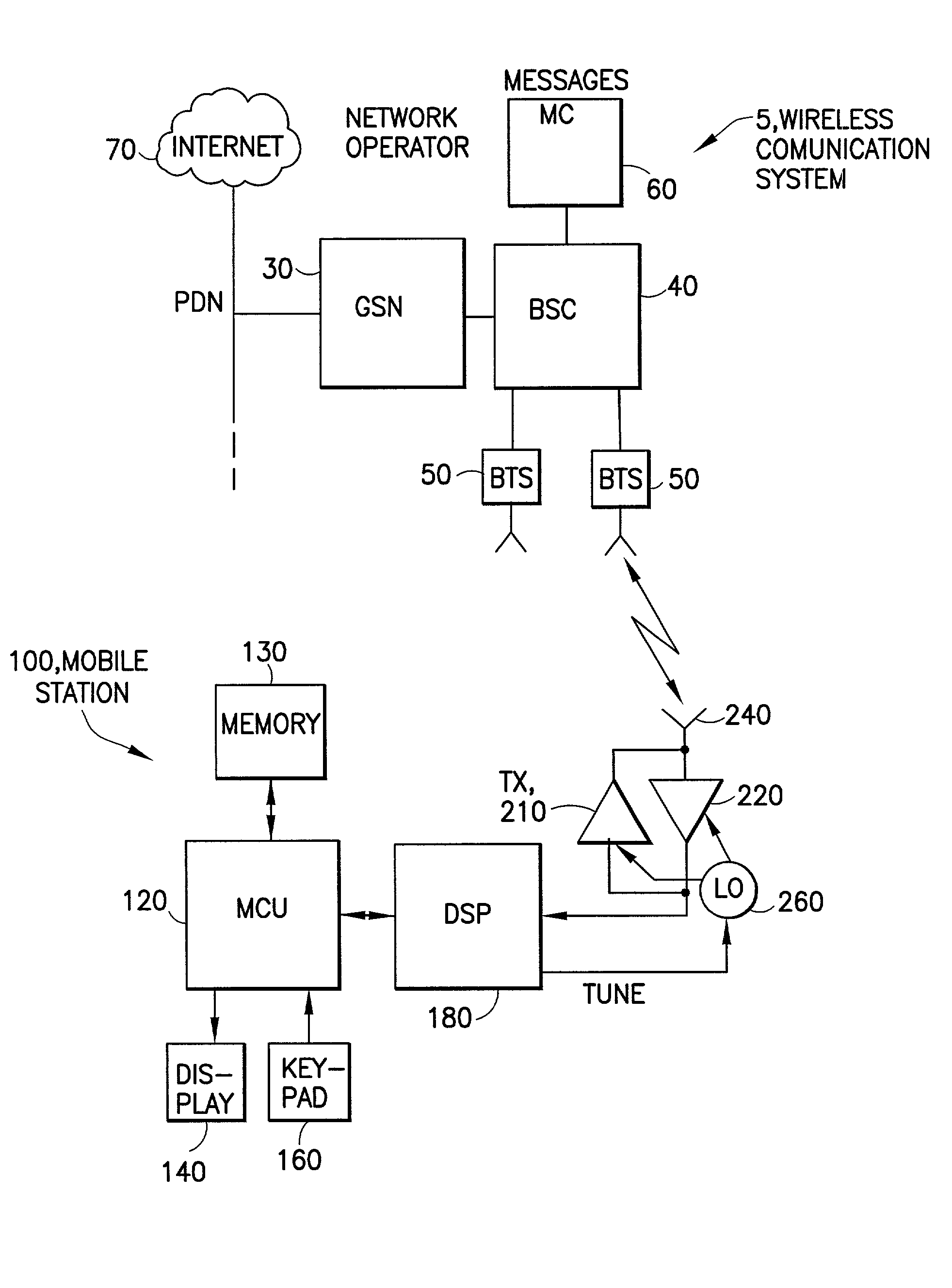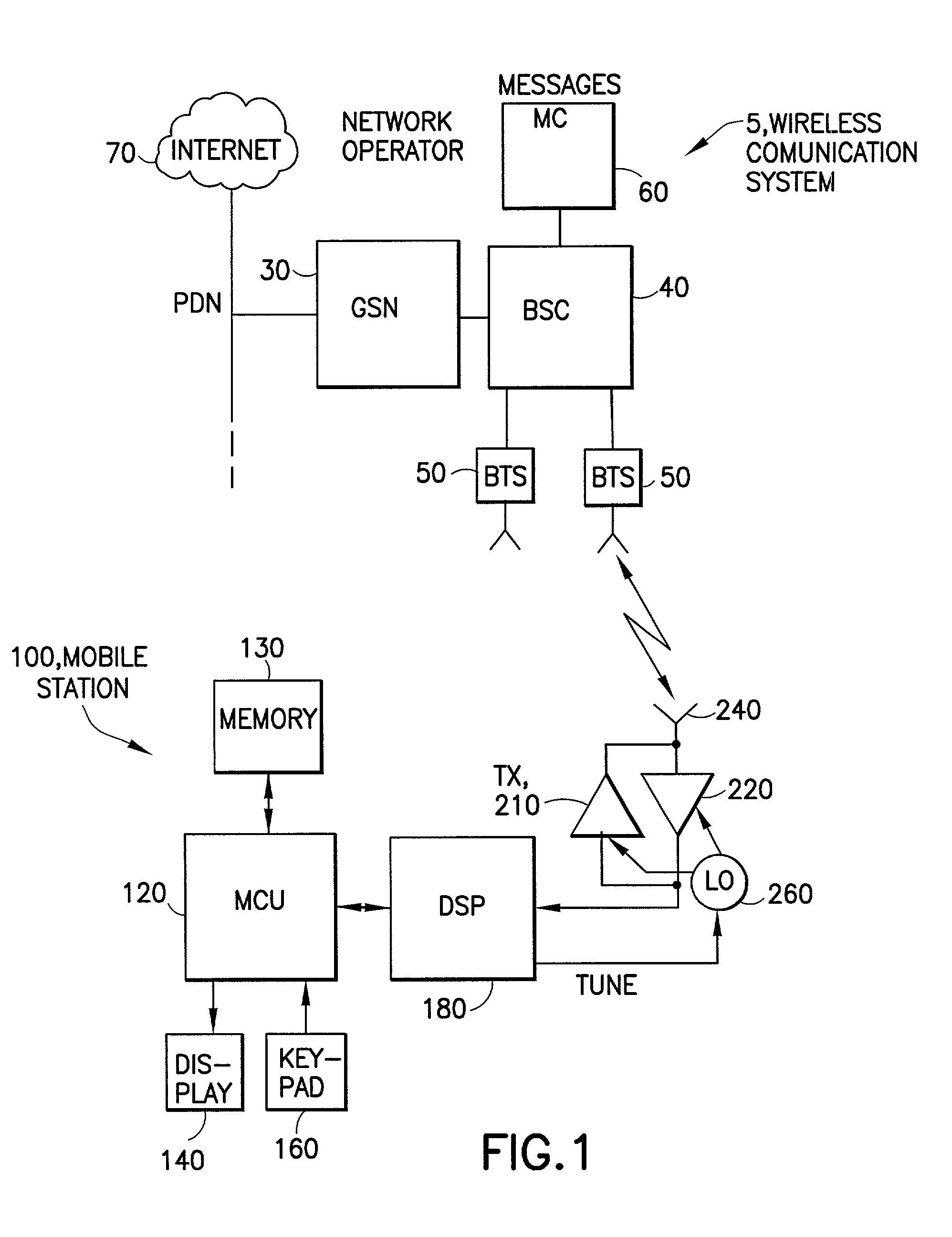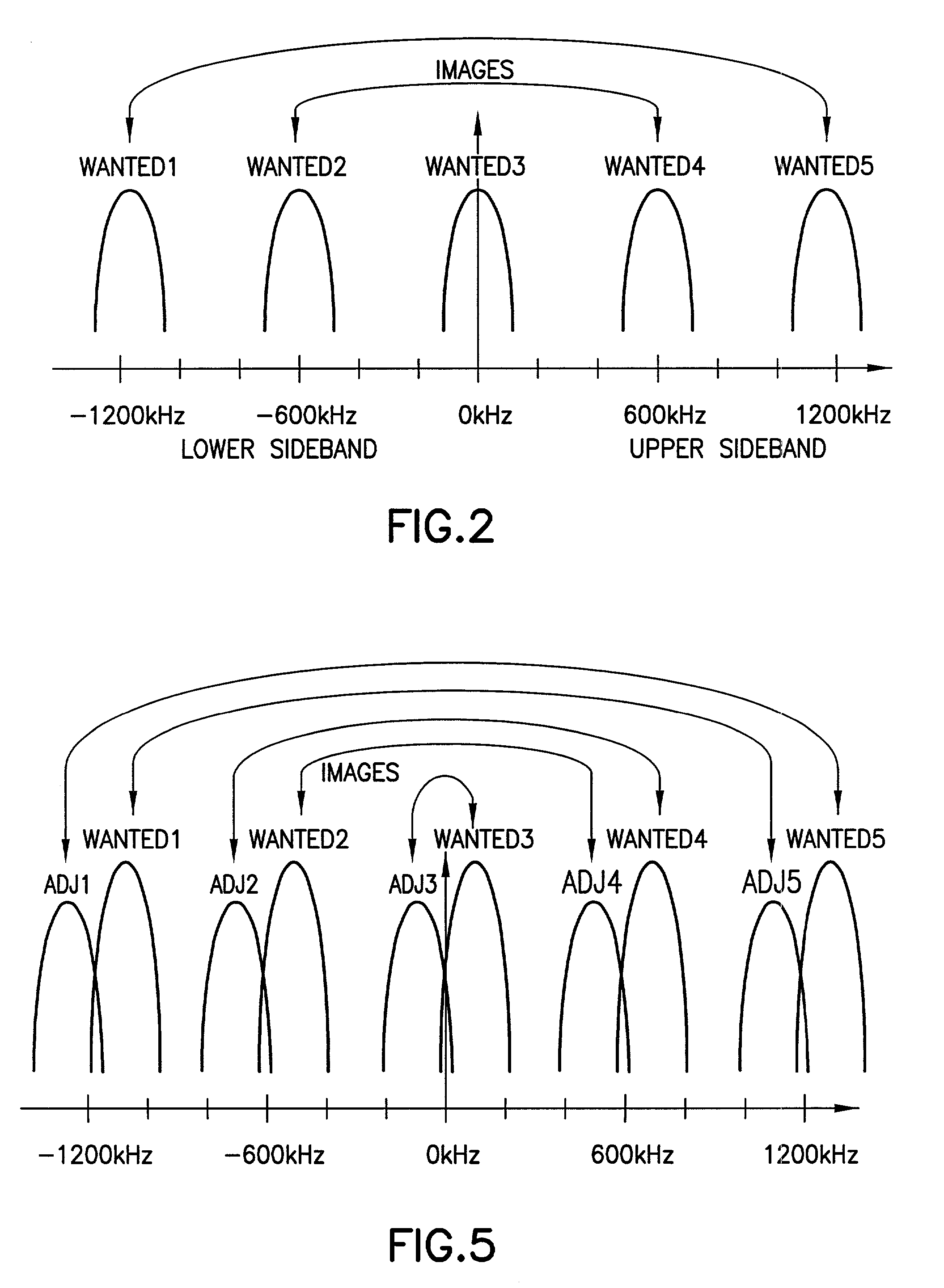Mobile station receiver operable for both single and multi-carrier reception
- Summary
- Abstract
- Description
- Claims
- Application Information
AI Technical Summary
Benefits of technology
Problems solved by technology
Method used
Image
Examples
Embodiment Construction
[0034] Referring first to FIG. 1, there is illustrated a simplified block diagram of an embodiment of a wireless communications system 5 that is suitable for practicing this invention. The wireless communications system 5 includes at least one mobile station (MS) 100. FIG. 1 also shows an exemplary network operator having, for example, a GPRS Support Node (GSN) 30 for connecting to a telecommunications network, such as a Public Packet Data Network or PDN, at least one base station controller (BSC) 40, and a plurality of base transceiver stations (BTS) 50 that transmit in a forward or downlink direction both physical and logical channels to the mobile station 100 in accordance with a predetermined air interface standard. A reverse or uplink communication path also exists from the mobile station 100 to the network operator, which conveys mobile originated access requests and traffic. It is assumed for the purposes of this invention that the BTS 50 has multi-carrier transmission capabi...
PUM
 Login to View More
Login to View More Abstract
Description
Claims
Application Information
 Login to View More
Login to View More - R&D
- Intellectual Property
- Life Sciences
- Materials
- Tech Scout
- Unparalleled Data Quality
- Higher Quality Content
- 60% Fewer Hallucinations
Browse by: Latest US Patents, China's latest patents, Technical Efficacy Thesaurus, Application Domain, Technology Topic, Popular Technical Reports.
© 2025 PatSnap. All rights reserved.Legal|Privacy policy|Modern Slavery Act Transparency Statement|Sitemap|About US| Contact US: help@patsnap.com



